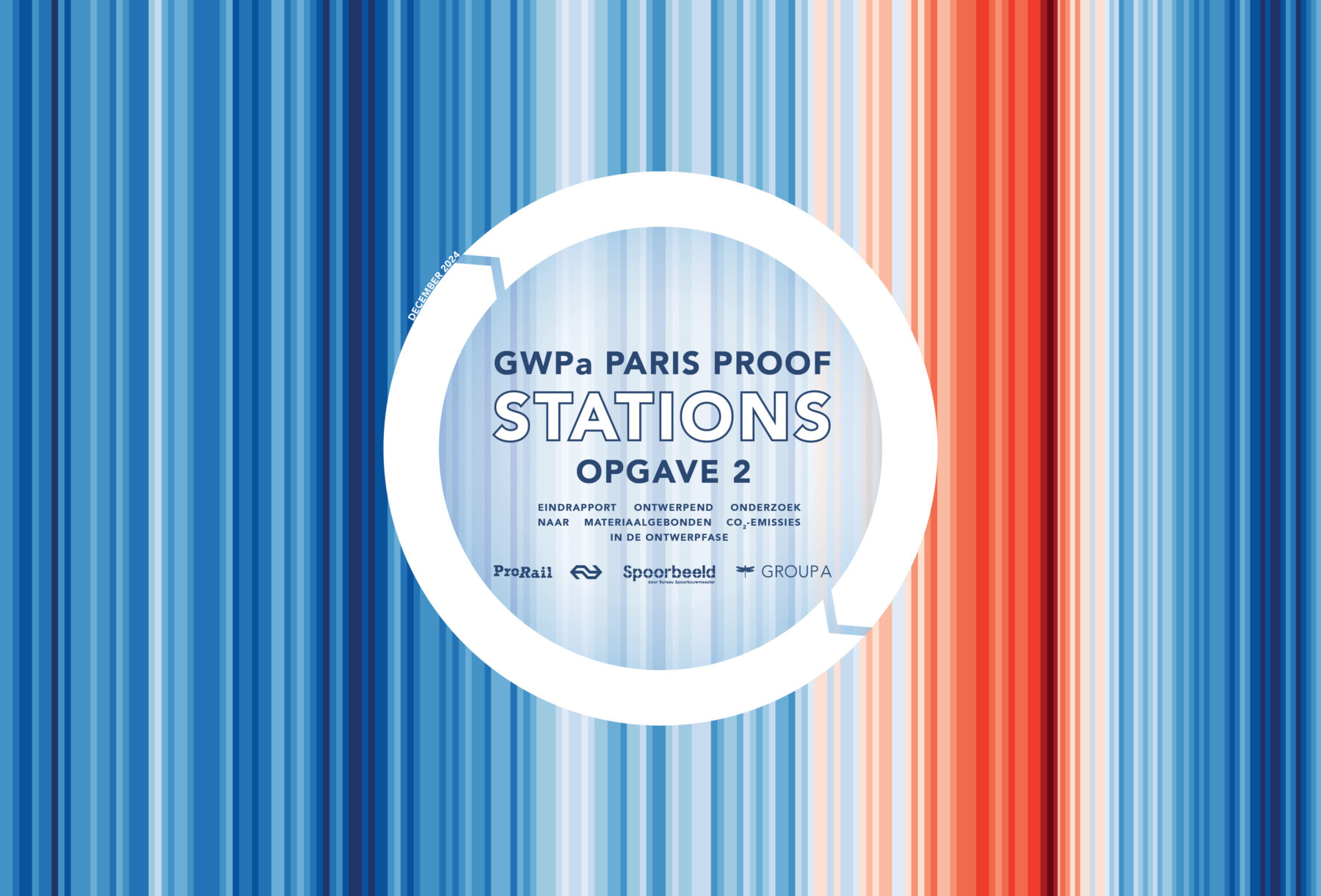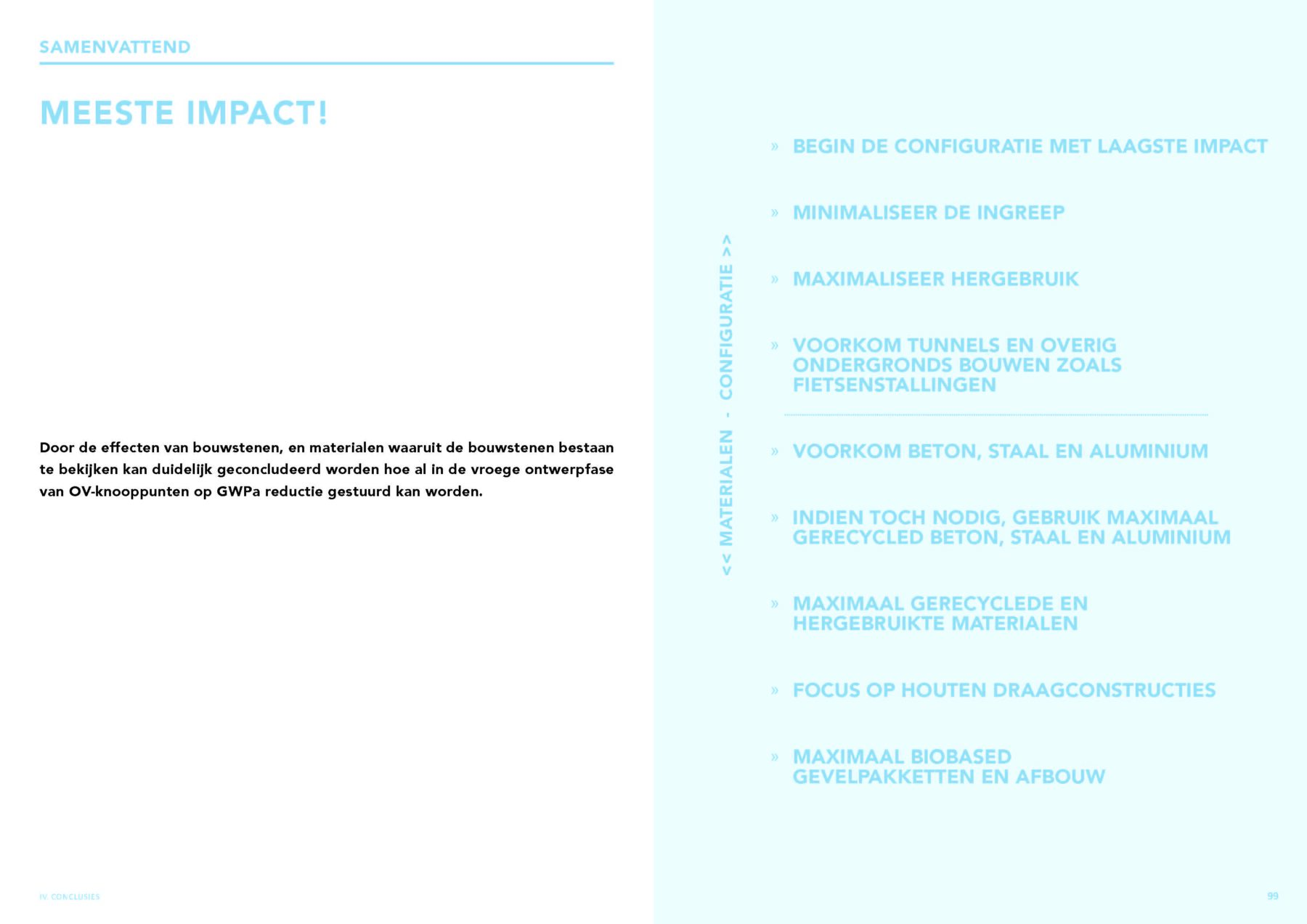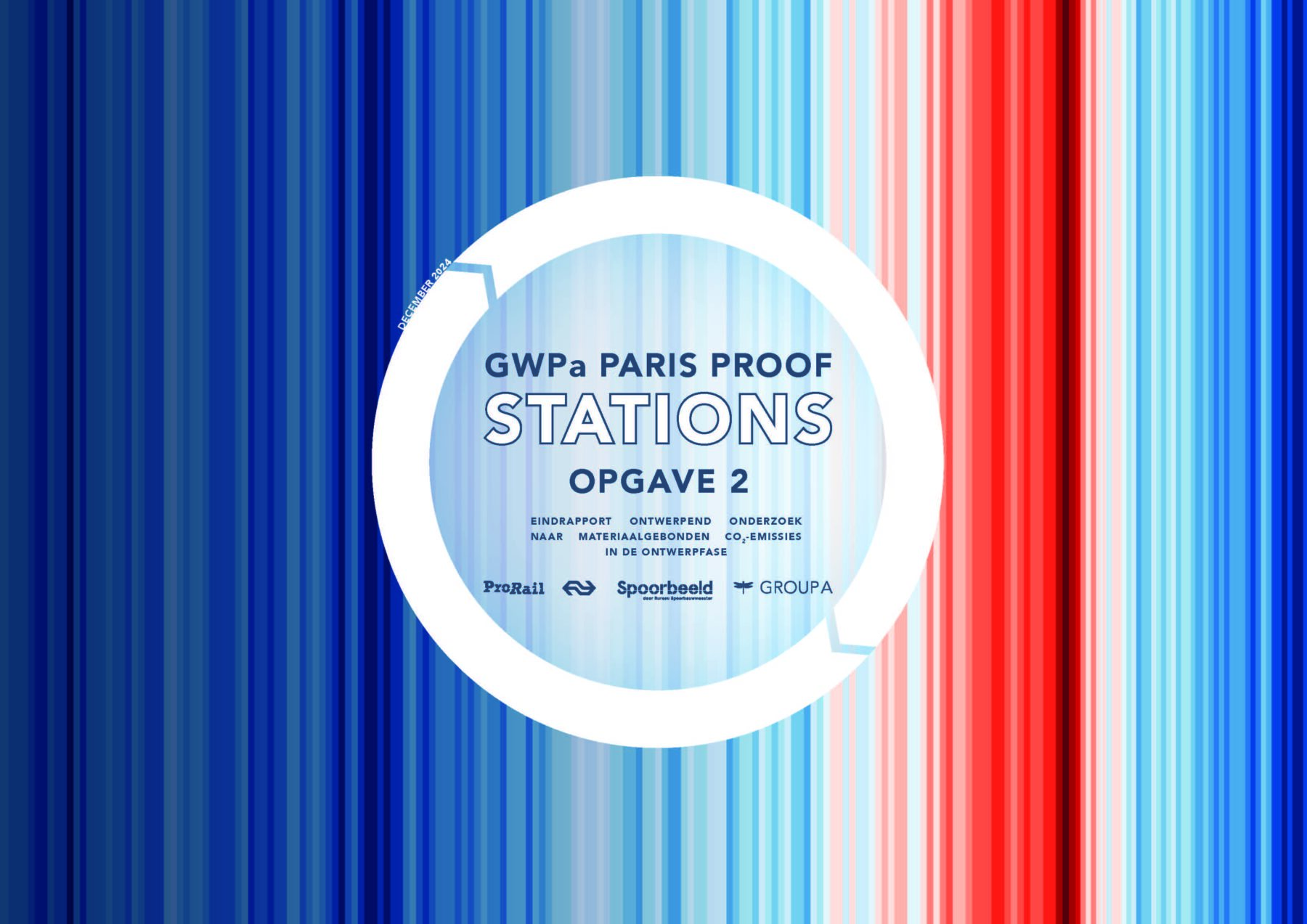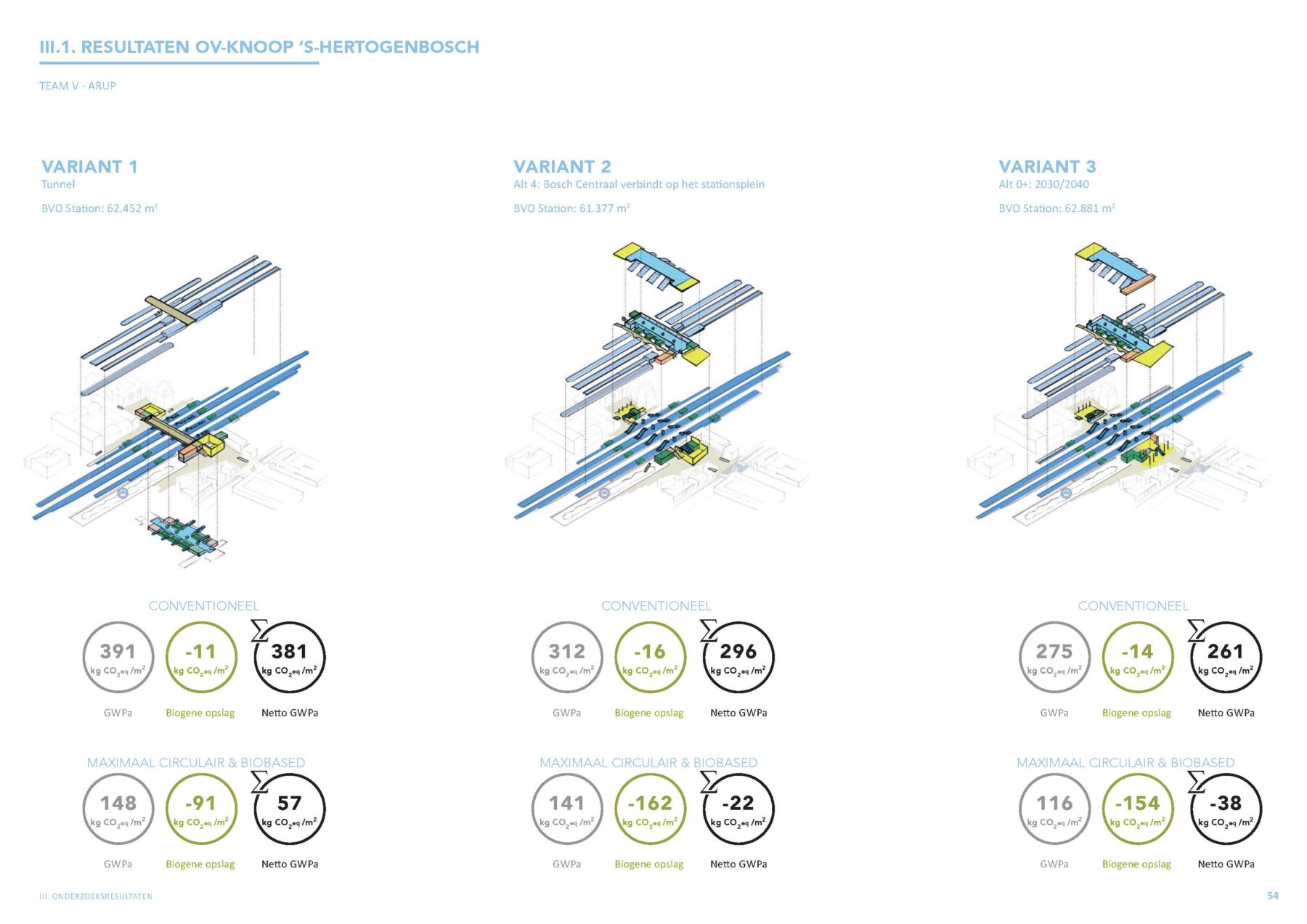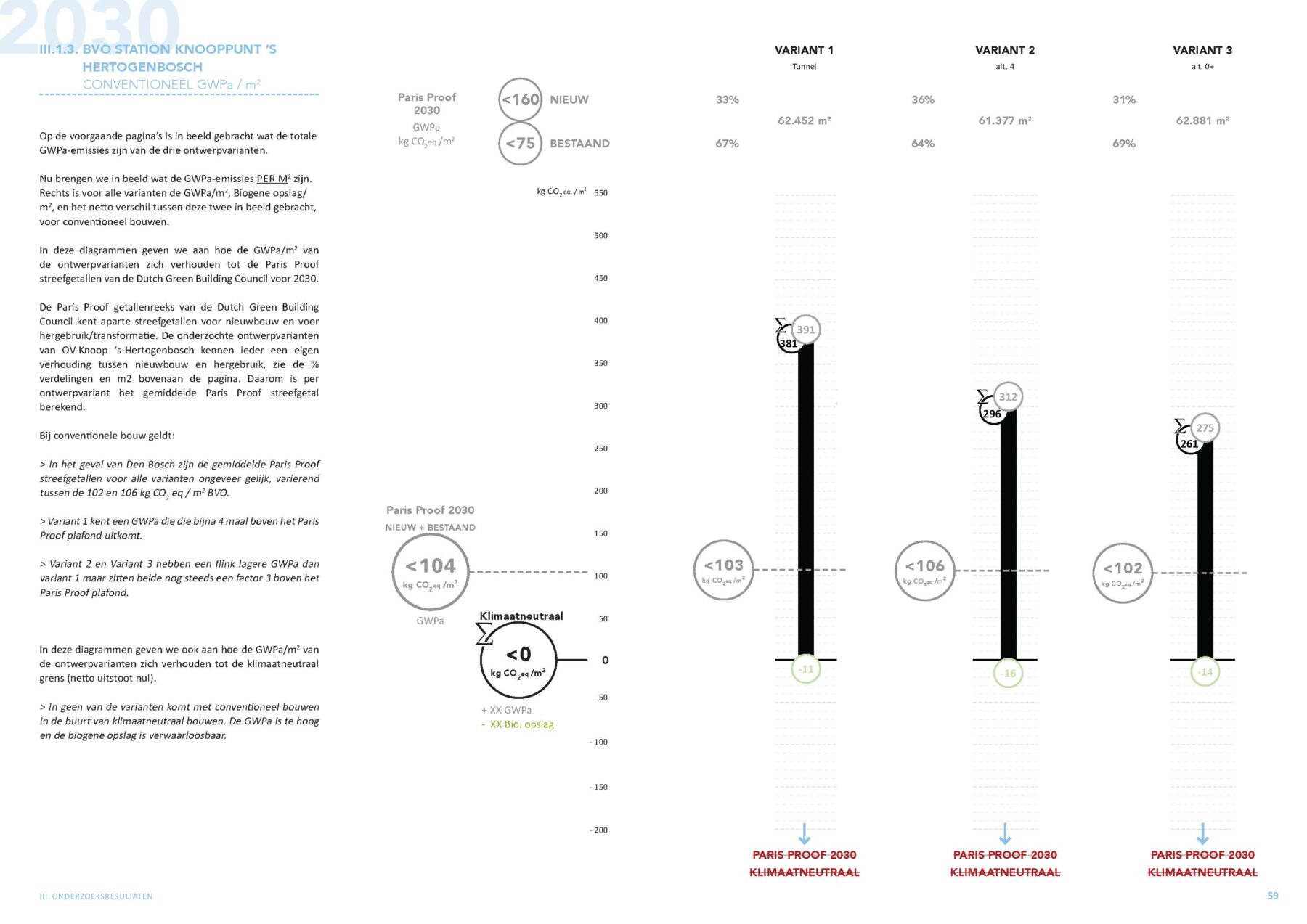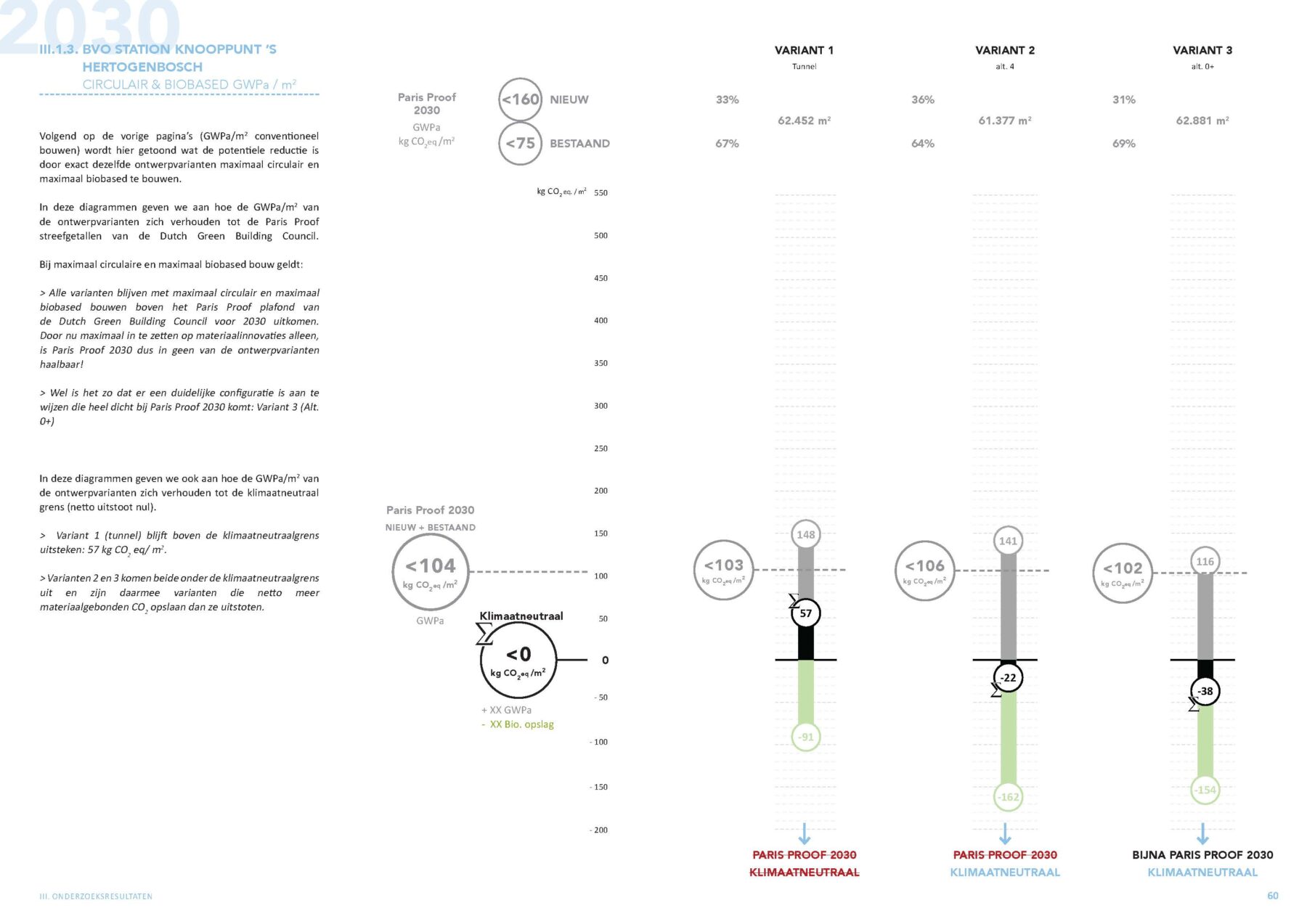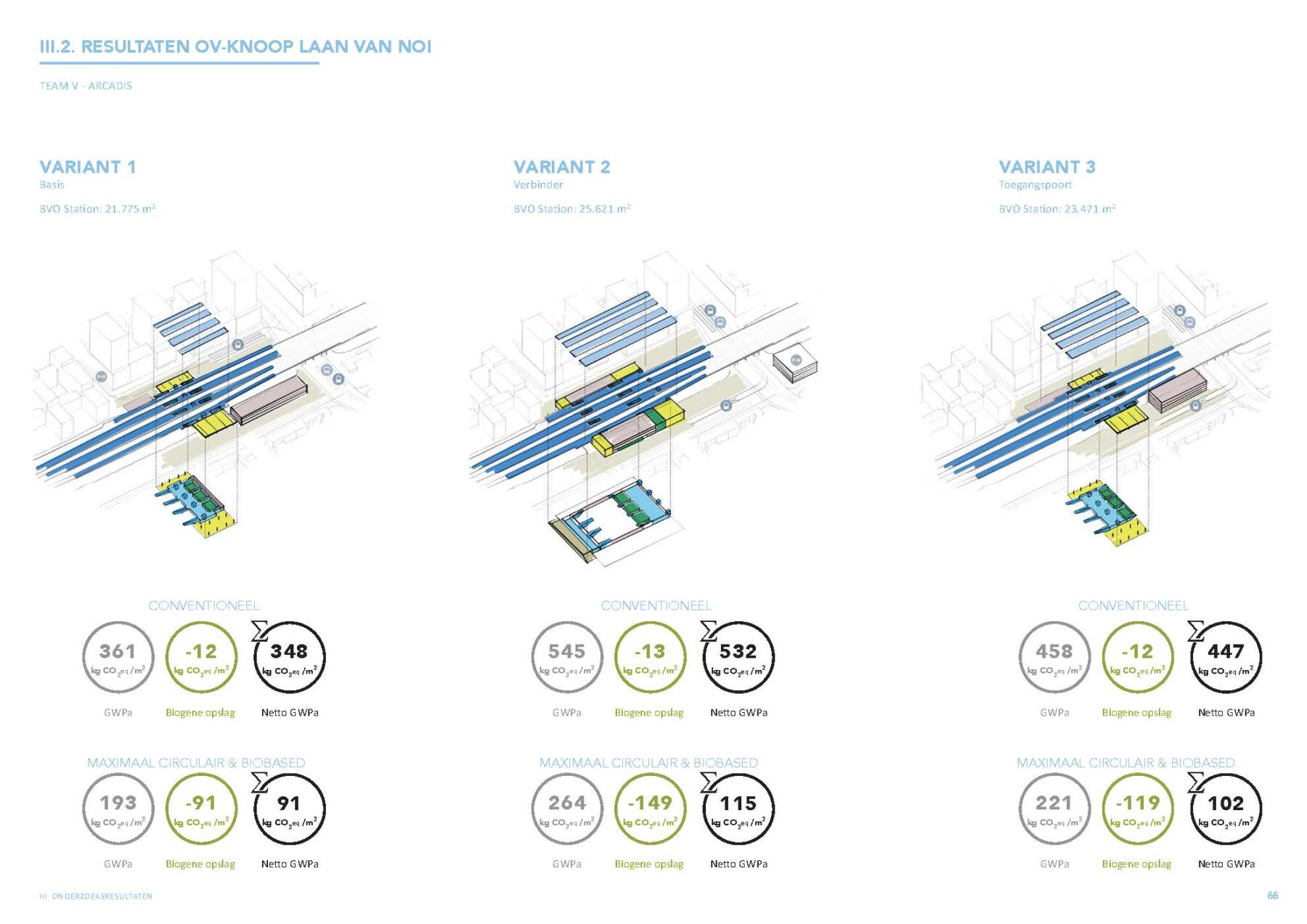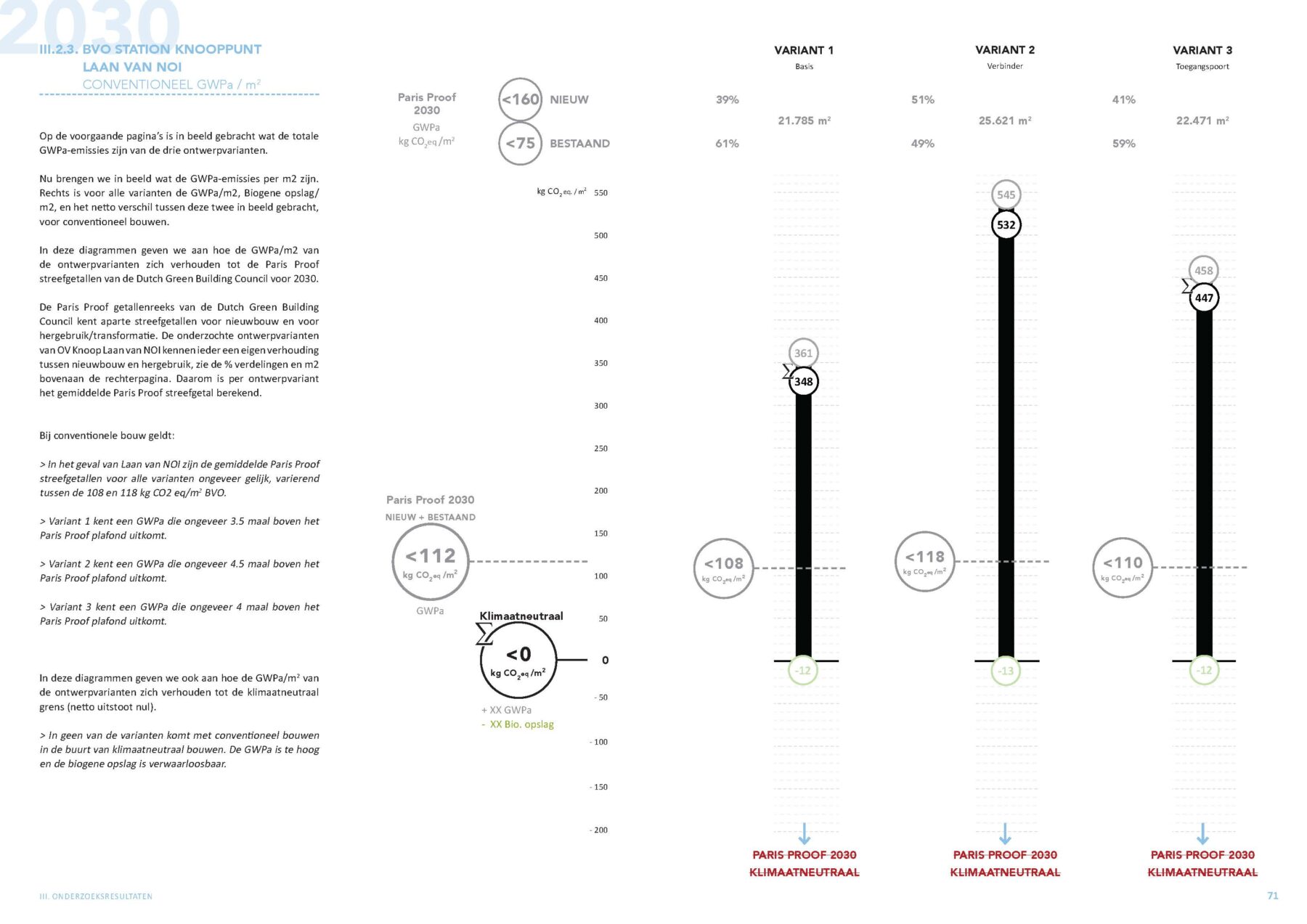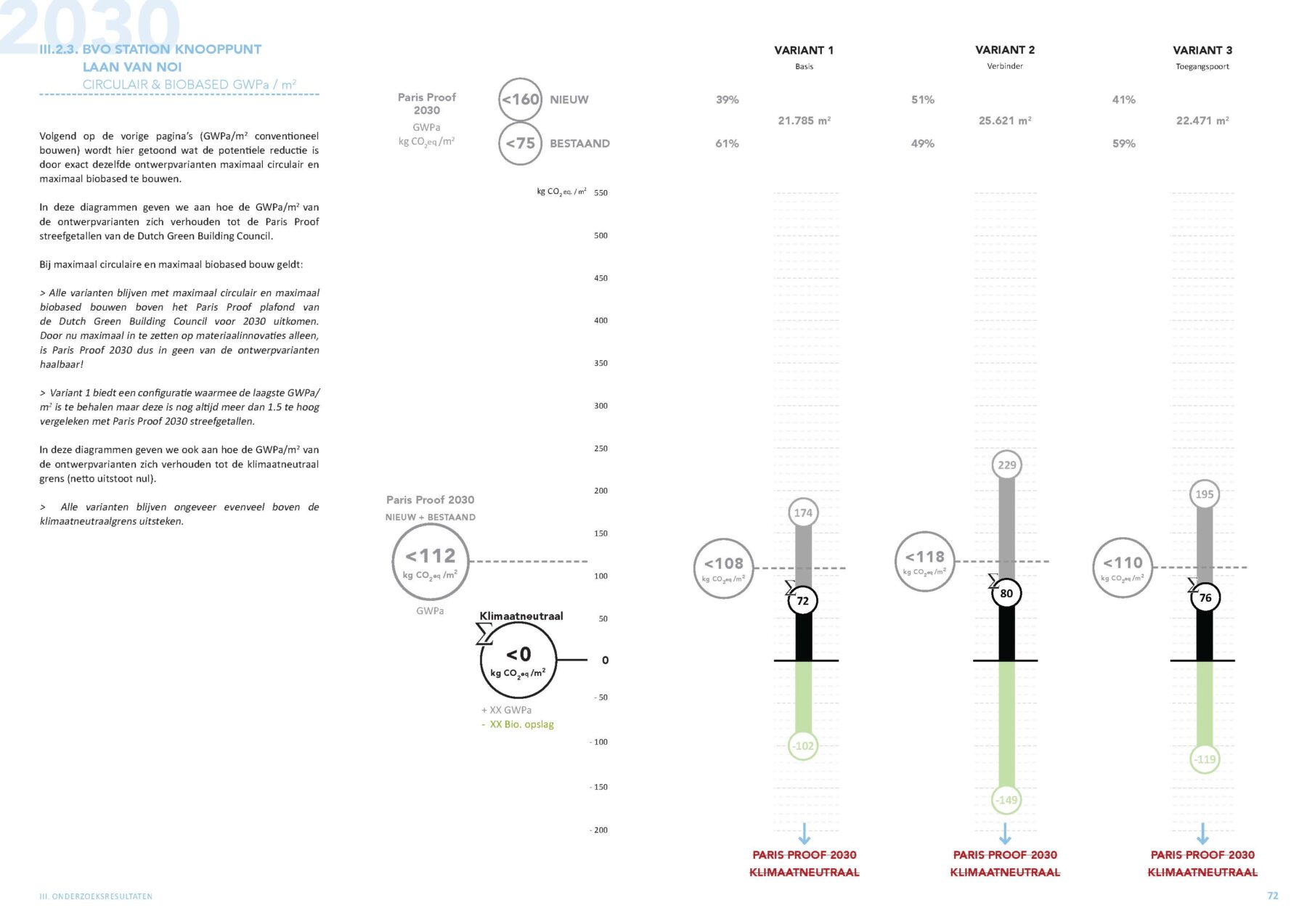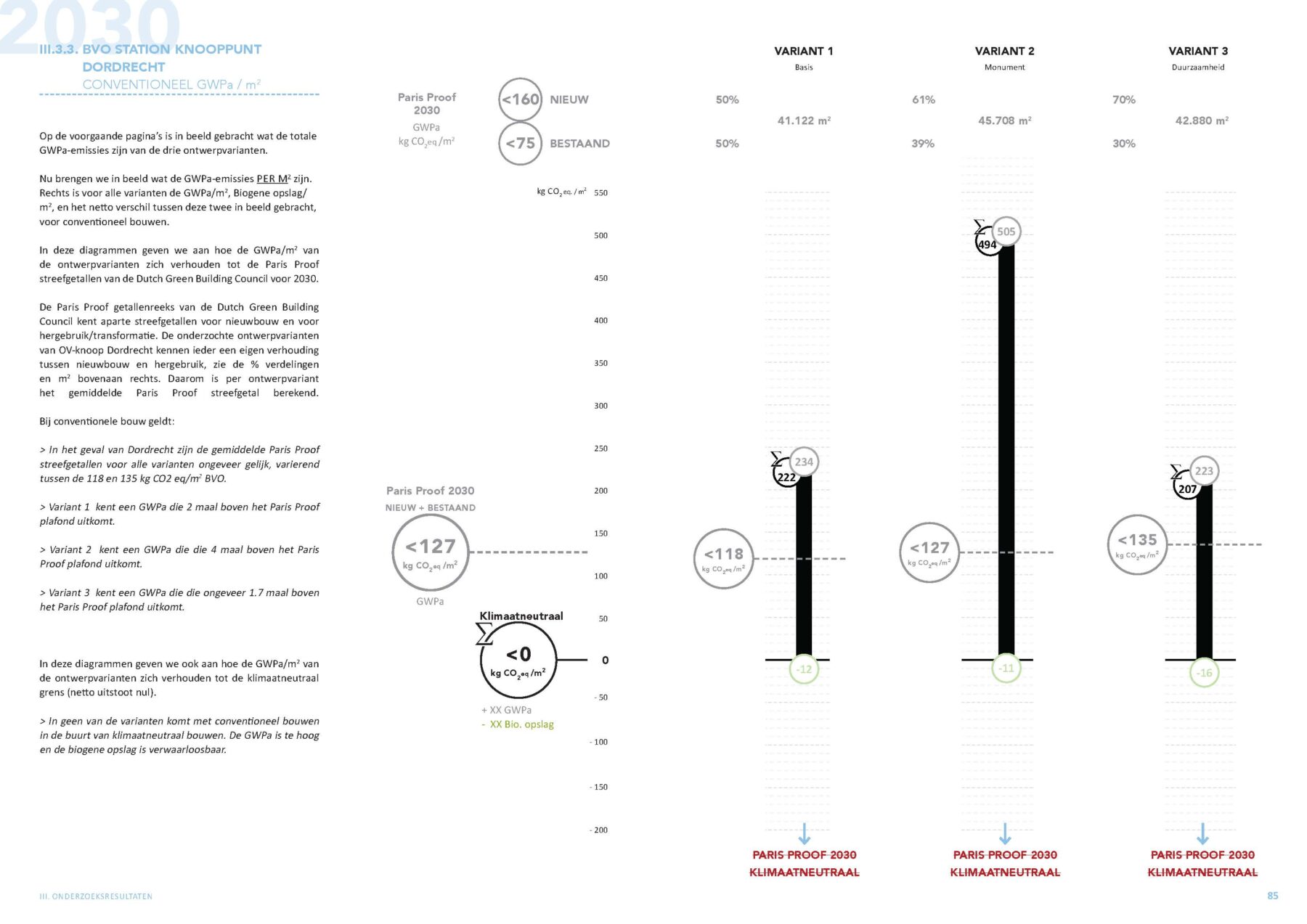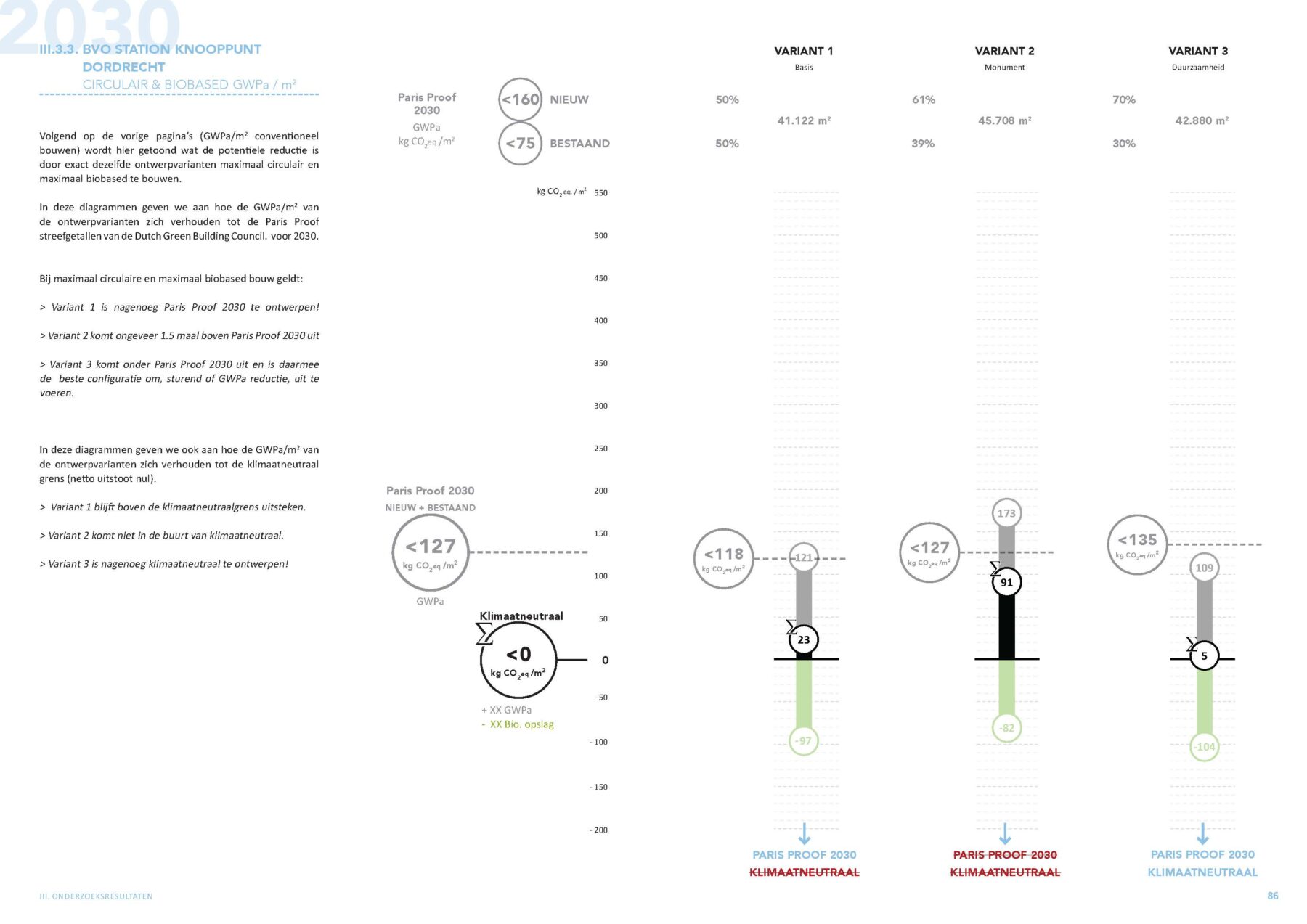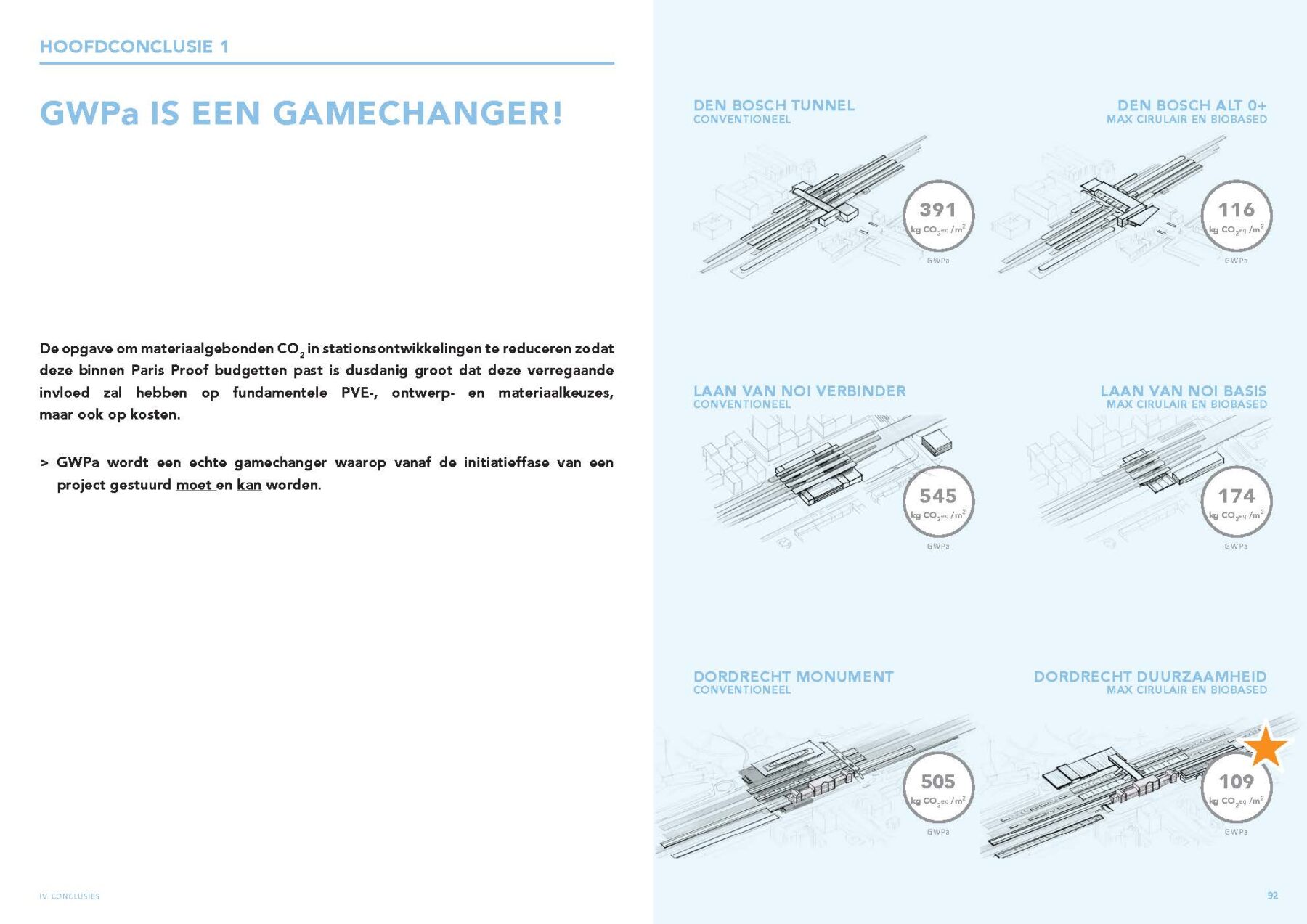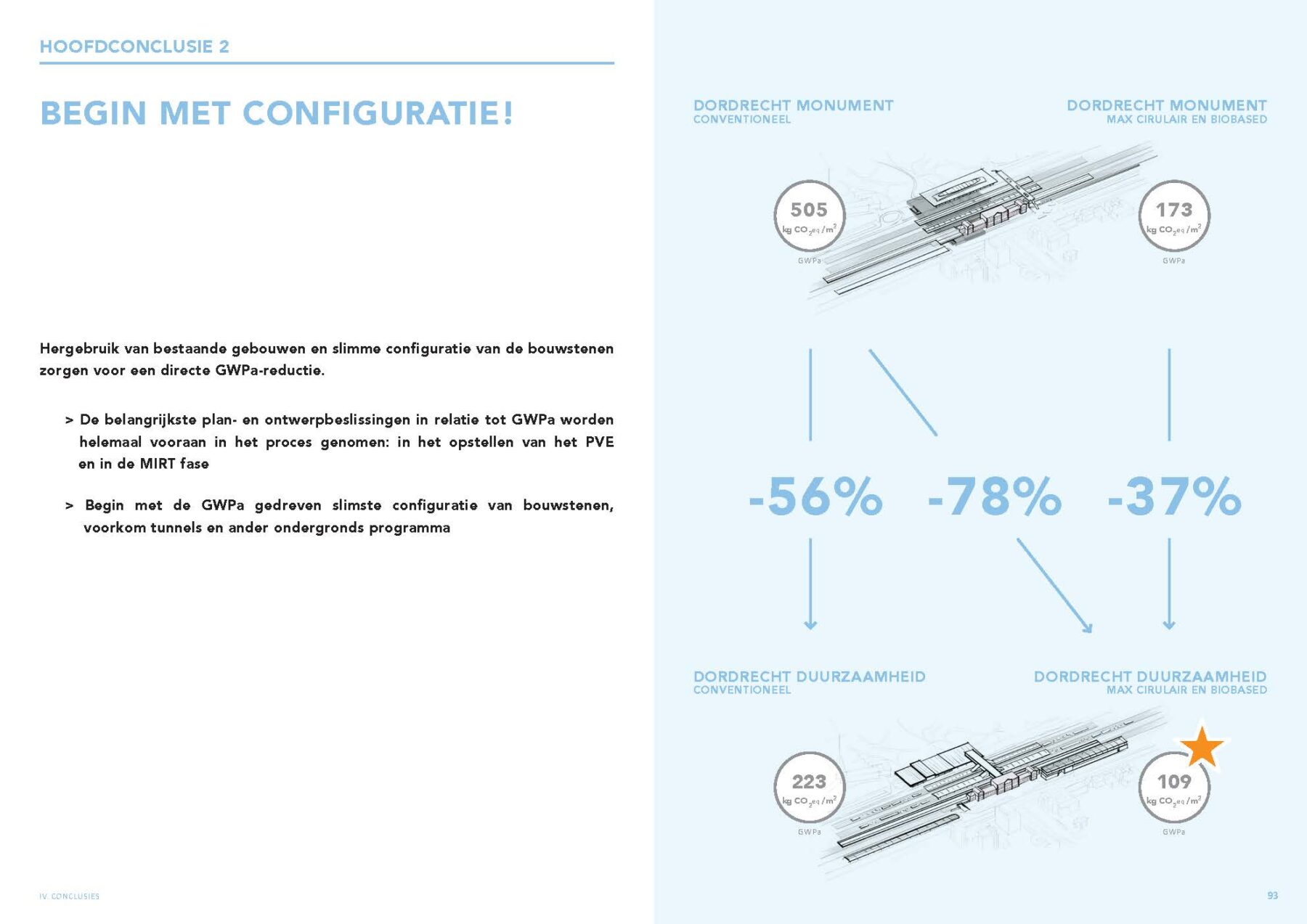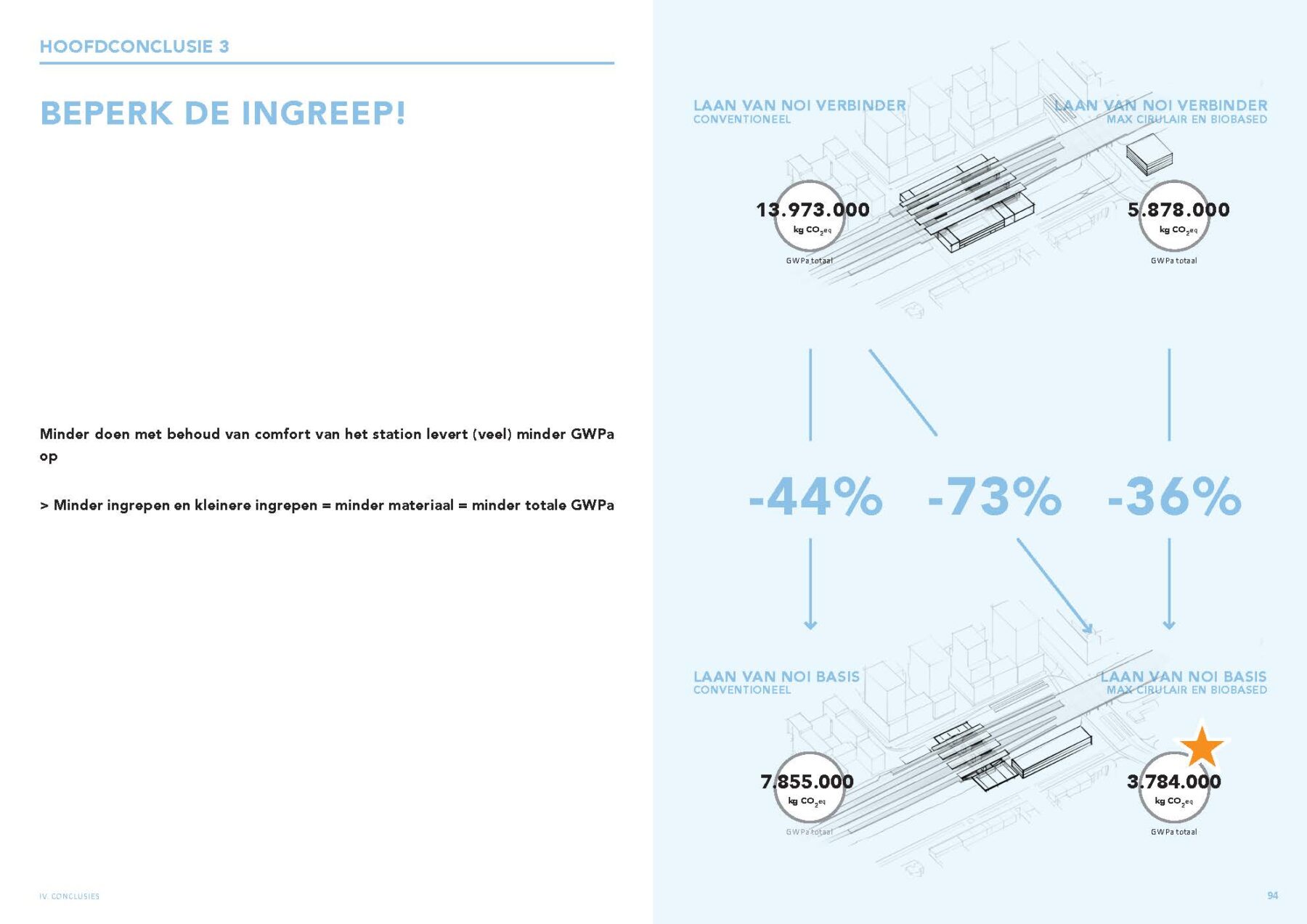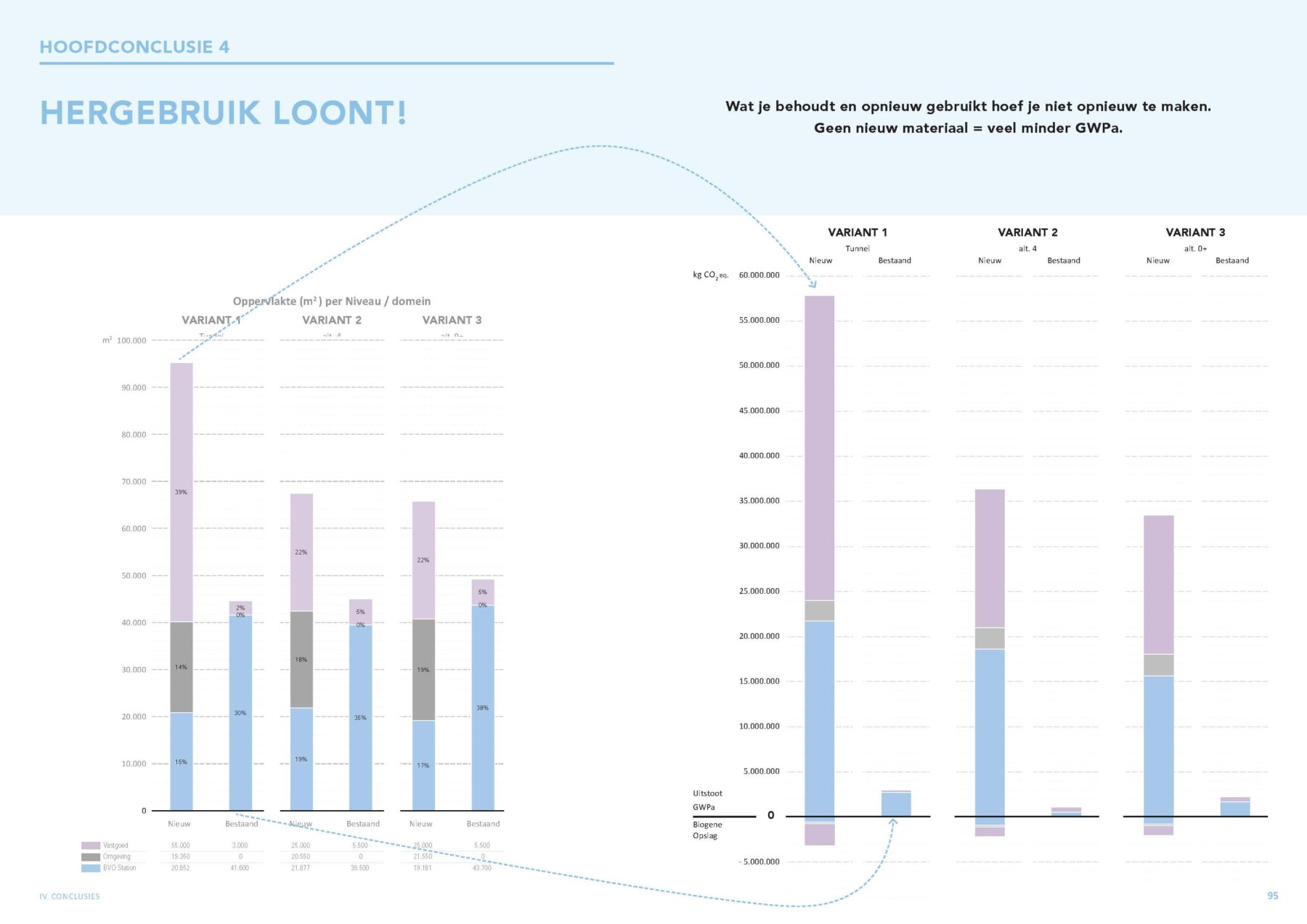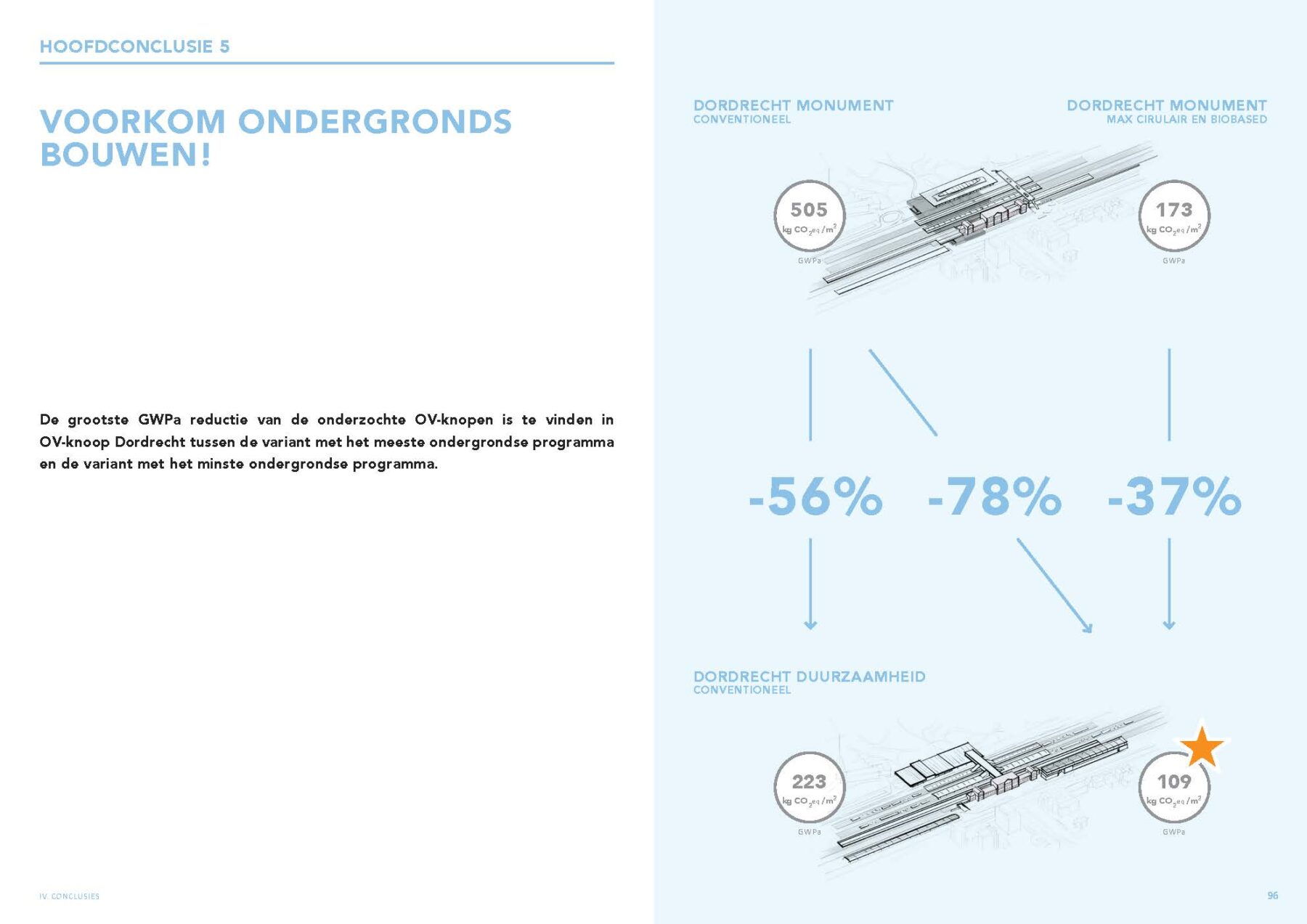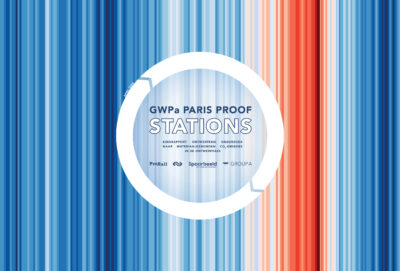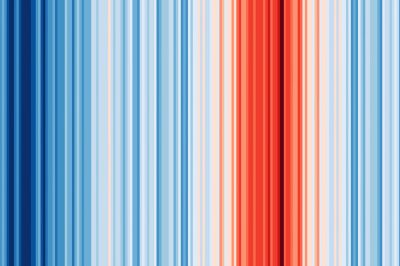Commissioned by ProRail, NS Stations and Bureau Spoorbouwmeester, GROUP A’s CARBONLAB has extended its research into embodied carbon emissions to include complex public transport nodes. Following the earlier study on smaller stations, this second design research investigates the embodied CO2 footprint of multimodal rail hubs in early design phases. The aim remains the same: to enable future-proof decision-making by developing embodied CO2 budgets that make it possible to keep emissions within the limits of the Paris Agreement.
Urgency
The Climate Act sets legally binding targets: 55% CO2 reduction by 2030 and 95% by 2050 compared to 1990 levels. In addition, the Dutch Ministry of Infrastructure and Water Management aims to realize climate-neutral infrastructure already by 2030. The Dutch rail sector has translated these goals into its own ambitions, some of which are even slightly higher, and is working with the Dutch government to achieve them.
Due to long development timelines, many projects now in planning will only be delivered after 2030. Climate neutrality requires urgent action now – particularly in early design phases where critical material and configuration choices are made.
Strategy
While Task 1 focused on completed stations, this study targets public transport nodes still in early design. Without finalized plans, embodied carbon impacts were assessed using scenario modelling and reference data from Task 1.
The focus lies on embodied carbon in modules A1–A5 (GWPa), enabling early-phase comparison of material and design choices. This supports development of GWPa-budgets for complex nodes and aligns infrastructure planning with climate goals.
This research provides:
- Insight into the embodied carbon footprint of major components within PT nodes including urban densification linked directly to station functions and other modalities related to PT nodes;
- Identification of the largest emission sources within the node configurations;
- Evaluation of alternative design strategies and material substitutions;
- Proposals for reference values and early-phase GWPa budgets;
- A check on whether 2030 and 2040 GWPa targets can realistically be met.
Approach
This study builds on Paris Proof Stations – Task 1, now focusing on three public transport hubs in early design (MIRT) phase: ’s-Hertogenbosch, Laan van NOI and Dordrecht. For each, three variants were analysed in terms of GWPa, comparing conventional construction (concrete, steel, glass) with maximally circular and biobased alternatives.
A catalogue of all building blocks—such as platform canopies, tunnels, bicycle parking, and commercial spaces—was developed per variant. Using refined reference values from Task 1 and the Stewart Brand layers method, GWPa values were calculated for each component and total station configuration. For Laan van NOI, an intermediate scenario with improved (but not fully circular) concrete was also tested.
All variants were benchmarked against national reduction targets, Paris Proof 2030 and 2040 goals, and climate neutrality. Finally, the impact of individual components was analysed to identify the main emission drivers.
Conclusions
The method of using Stewart Brand layers to estimate GWPa in early design phases works well. It allows meaningful CO₂-based decision-making before technical detailing starts and introduces embodied emissions as a key design parameter.
The results show that conventional design approaches—especially those relying on tunnels and underground structures—fall short of all climate targets. Only variants with above-ground configurations, low-carbon materials, and reduced program sizes show potential to meet 2030 goals. With the current knowledge and data concerning materials none of the cases currently reach Paris Proof 2040.
Designing climate-proof transport hubs starts with smart choices in early planning: above-ground structures, fewer materials, circular and biobased solutions—and a critical look at what truly needs to be built.
Download the summary of “Paris Proof Stations Task 2”. Or read the full report.
Facts
Client
ProRail, NS Stations and Bureau Spoorbouwmeester
Assignment
Research by design
Location
Netherlands
Area
3 stations
Start design
Q2 2024
Completed
Q4 2024
In collaboration with
Bureau Spoorbouwmeester, ProRail
